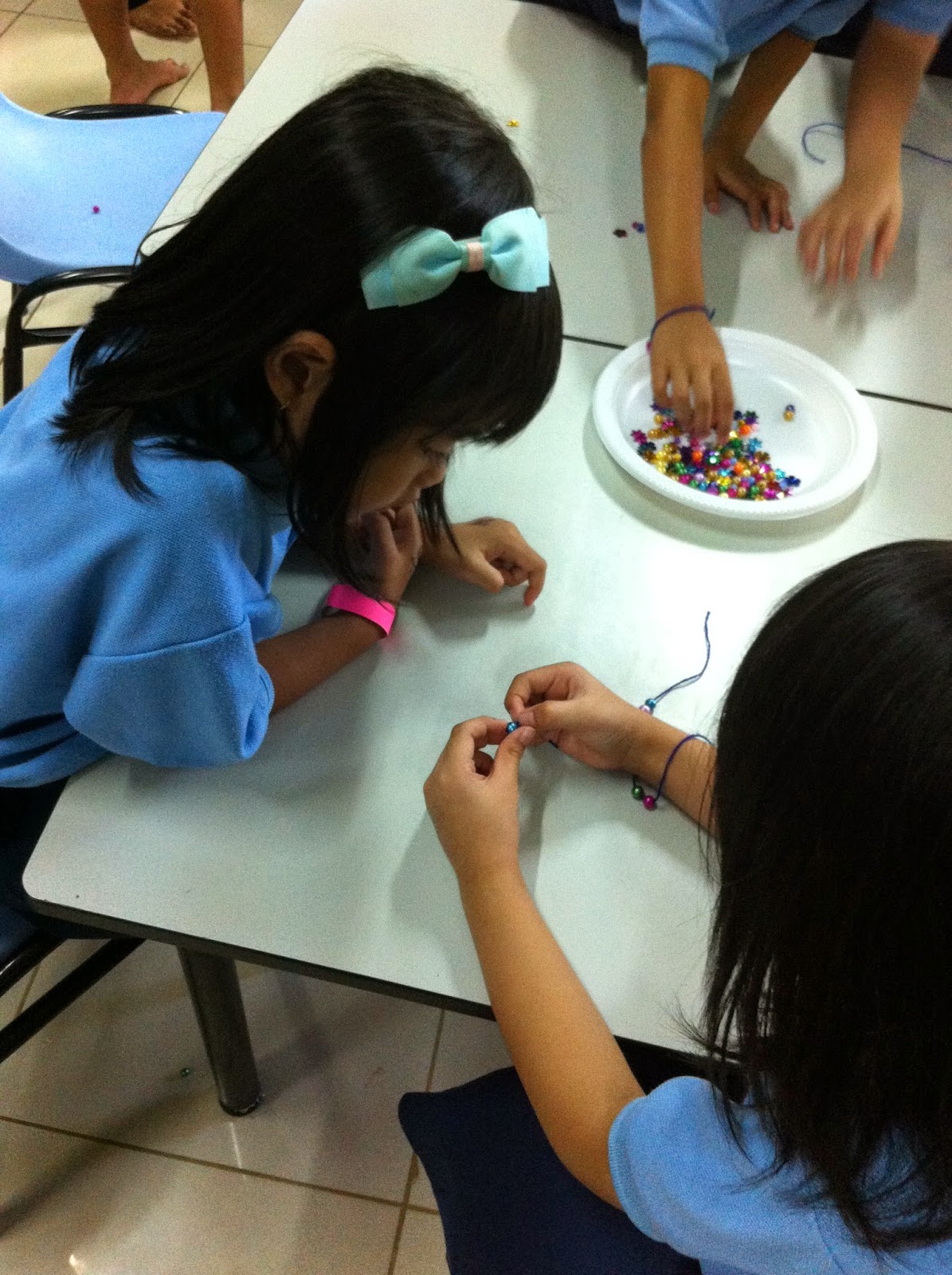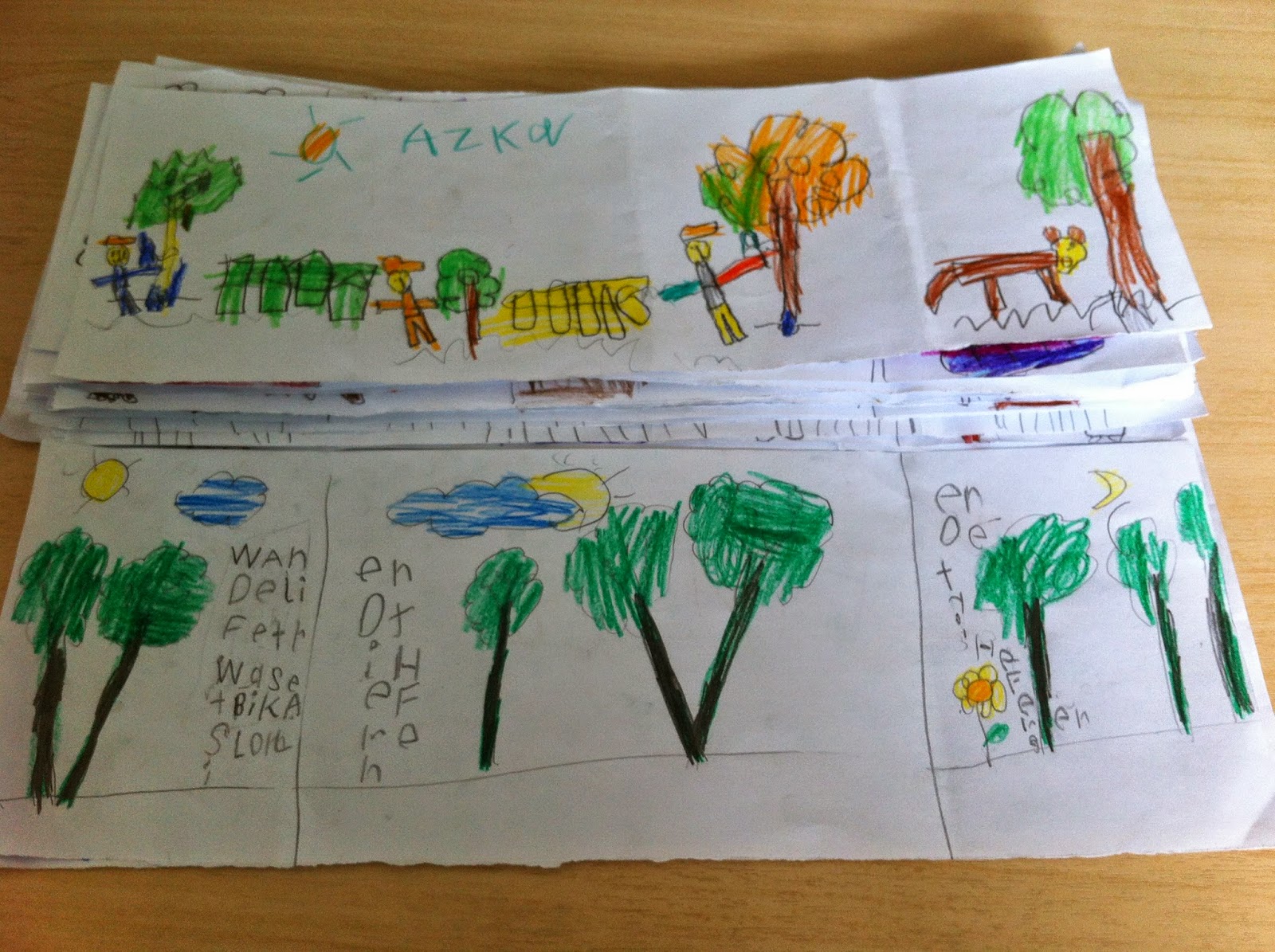K2 Imaginative Storytelling
The language of trees
For the sake of the activity, I will have to contradict the wisdom of the Lorax who "speaks for the trees, for the trees have no tongues" and support Carl Jung's insight that "Sometimes a tree can tell you more than can be read in a book." Trees talk in a low, whisper-like voice. The more we pollute with trash and noise, the less able we are to hear the stories of the trees. When a leaf falls off a tree, a message is embedded onto it. Here is the message, interwoven into the leaves I used to make the drawing.
The happy fisherman and the laughing fish
Once upon a time there was a very really sad fisherman who was constantly feeling down with no reason. His mood was nestled in the depths of depression and he himself didn't know why. Everything in his life was going on according to the menu of the best fish restaurant in a fisherman's village. He had a nice seaside cottage, facing the morning sun, had a good daily catch of fish, caring wife, and the courage to devote his life to the sea. One day, while he was catching yet another fish, he heard something. The fish he just caught was laughing loud with a fish-like voice and hardly able to withhold its laughter. He decided to keep the fish and find out what was that thing that was making it laugh that badly. Days and months passed by but the fisherman couldn't work it out. He didn't gain the knowledge nor the understanding but he got the mood. The contagious laughter of the fish made him so happy that he seized every moment possible to show off his smile in front of the sun, sea, his wife, his life...
Before sharing with the kids what was my version of what made the fish laughing, I asked them for their guess. Answers ranged from "another fish sneezed and made it start laughing" to "the fish saw a clown-fish and started laughing."
It turned out, that the reason why the fish couldn't stop laughing was that a bone of the fish it had for breakfast got stuck in its throat and was tickling it all the time.
Ask children to pick two fallen leaves and tell what they look like to them. After, they "read" the message, embedded in the leaf, they make a drawing based on it and tell the story in front of the class.
Collect as many parts of trees (things that have fallen naturally) as you can. Arrange your collection, play with it, hang it, study the shapes, do drawings, hang trees from branches. Celebrate trees!
The butterfly
Fisherman on a boat
A kite and a flag
The chef with the sharp knife
Before proceeding to the next phase - storytelling based on the pictures - children make their own retelling bracelets. Luckily, threading the beads onto the yarn turned to be slightly difficult for the kids which in turn opened the way to pure collaboration. Students who are struggling with the task are asked to seek help from their fellow classmates who have already made their bracelets successfully. Hence, children had the opportunity to practice their social and communication skills.
Next...
Capture the hidden life of inanimate objects found in nature. What do they do when there are no people around? Track their activities. What super-powers do they possess? What do they do when there are no people in their vicinity?
During our next lesson, we went outside in order to select a tree as the main character of our story.
The story of the dancing tree.
Once upon a time, there was a tree with rather peculiar shape. All the forest creatures were at the same time astonished and perplexed by its shape. "Why is that tree bent in all directions" wondered they. Filled with bewilderment, some of the animals approached the tree and to their further confusion, they could overhear a melody coming out of the tree. Some of the animals dared to approach further when they suddenly found themselves in front of a small hidden door with no locker. They knocked. Once. Twice. Three times. No one answered. The door suddenly opened and what they could see inside the tree was a small caged bird. The bird was singing happily - melody upon a melody - making the tree dance and causing that bizarre shape.
Down: Sadly, there was no rain which caused the tree to shrink until it turned into a leaf.
Down: The tree was feeling lonely until a flower grew next to it. Our friends could be very different from us; everyone could be our friend, regardless of color and kind.
Down: Someone chopped down the tree and on its place a flower grew to remember the tree and mark where it used to grow.
Down: The tree disappears when someone picks up an apple from it.
The second story marked a smooth transition towards the story of The Little Prince by Antoine Exupery. In order to provoke imagination and crazy thought generation, I drew the boa constrictor digesting an elephant.
The students' progression of thoughts:
As a comparison, it took on average 10 minutes of brainstorming (without listening to the story) for a class of 5/6 year-old kids to figure out what is in the picture - an animal (camel, horse, elephant) inside a snake, whereas it took 30 minutes and multiple sessions of short referrals to the picture (and listening to the story) for a class of 6-7 year-old kids to decide to give up as they couldn't figure out what is in the picture. Their responses ranged from melting pizza, drill, and tree that has been chopped down to a mountain, people upside-down, and a bird eating an elephant. It was relatively harder for the first-graders to imagine the boa constrictor eating the elephant even after revealing the truth.
Ironically, the day I decided to help the first-graders solve the riddle and discern the elephant and the snake, I had a student come to me before the class and show me his picture. This was a brilliant opportunity to use his picture as an example that every time anyone of them shows their work, or shares his/her ideas with someone and the latter disagrees with them, they should never give up on their ideas.
Collect multiples of leaves or stones. Find such that look like other things.
The red-faced angry man
The final assignment is a group project of a puppet show. Kids split into 4 groups according to the prevalent wish for a story theme and choose their characters. They have to make their own puppets and it is entirely up to them to decide what to use: paper, natural materials, recyclables, etc.






























Comments
Post a Comment